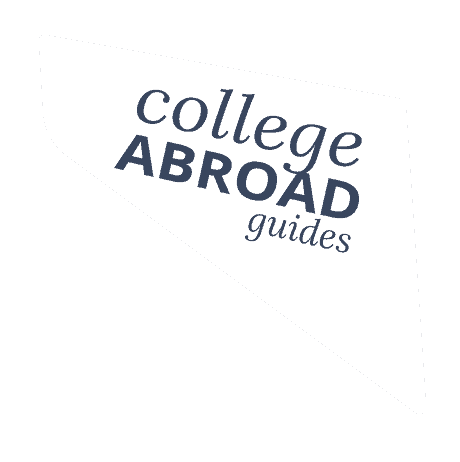An International Superstar: What is the University of Edinburgh Like?

- Originally published
- Last updated on August 23rd, 2023 at 09:16 am
Table of Contents
From student life to clubs and societies, we’re exploring the basics at a university that seems overwhelmingly beloved by its students. Seriously, no one would tell us they made a mistake coming to Edinburgh. They love their lecturers. They love living in Scotland’s capital. They love the University rankings, which make it a powerhouse degree that opens future doors. Small enough to make international students feel at home and large enough to open up a world of opportunities, Edinburgh could be your place. Maybe. But what is the University of Edinburgh like for students on a day-to-day basis? Let’s check it out.
Find out more if Scotland is right for you, then compare universities up north to down in England.
University of Edinburgh Basics
Degrees: MA, MMath, BSc, MPhys, MChemPhys, BA, BD, MEarthSci, BEng, MEng, LLB, MBChB, MInf, BMus, BN, BVM&S (all undergraduate entry)
Majors: The off-the-charts number of potential courses of study at the University of Edinburgh is, in part, down to its generous joint study programs. For example, within its #66 US News-ranked geosciences program, you can choose from 9 geophysics + programs, coupling geophysics with fields like meteorology or geology. Thinking about philosophy? Try it with Scottish literature, mathematics, Greek, or politics. You’ll get unique offerings like Scottish Ethnology and Scandinavian Studies, Celtic and Archaeology, Arabic and Business, or Biological Sciences and Management.
Location: Edinburgh, Lothian, Scotland
Cost for International Students: £24,500 for social science and arts courses, £32,200 for artificial intelligence, chemistry, and the sciences, £35,000 for clinical medicine years 1 to 3, then £49,900 in years 4 to 6. £35,200 for preclinical veterinary degree study.
On-campus housing cost: £2,915 to £9,950 with multiple urban locations offering single, twin, en suite, catered, etc. options
FAFSA Funds: Yes
Abroad from abroad: Yes. Hundreds of programs serve students who want to spend a year abroad, but you’ll be limited by your degree program and language abilities. For instance, art history students won’t find any English-taught programs at all.
Student body: 49,500 total students (21,780 international, about 44%)
Five adjectives: Massive, International, Exciting, Beautiful, Open-Minded
Studying in the Drop-Dead Gorgeous City of Edinburgh
Edinburgh, with its 525,000 residents, is the biggest city in Scotland. However, after a few weeks in the city, most students who are studying in Edinburgh have the drill down, from the campus housing scattered across the chilly Old Town to the hot local cinnamon rolls they can grab on a blustery morning en route to class. The city is about the size of Portland, OR, or Oklahoma City, OK.
Edinburgh gets accolades as one of the world’s most beautiful cities, often winning awards that put it among the top ten, beating out London and Venice.
Students here agree. Many that we spoke to said they picked Edinburgh after seeing the city’s gorgeous multicolored buildings, all lining cobblestone streets beneath the ominous landscape of extinct volcanos. Many come to the University of Edinburgh to drink up that ambiance. They say they appreciate the craggy rocks the city’s hilltops, where picnics and photographs are welcome weekend escapes.
They also note the towering city buildings, creating dozens of medieval “closes,” alleyways where the sun barely penetrates. Edinburgh’s history is so palpable that you can’t escape the ghost tours that make their living shepherding tourists around the Old Town buildings, where once everyone from plague victims and fishmongers lived their lives.
Nothing is as beautiful as Edinburgh. The city was part of what sold me.
Edinburgh is made all the more vibrant by its annual August Fringe Festival, famous for its sheer number of installations, bands, and circus acts that line the Royal Mile (and make last-minute housing shopping nearly impossible).
Hanging Out and Nightlife
In short: there’s plenty to see and do at the University of Edinburgh. The city caters to students looking for active nightlife and business opportunities from a bustling economy full of startup incubators and internship sites. Sure, Edinburgh has developed investor networks. But its scene is still small and DIY compared to other student picks like London. If London is a glossy media empire, Edinburgh is the maker scene. For students who want to break into tech or the arts, or start their own entrepreneurial empire, Edinburgh may just have the chops to support them in a way that larger cities cannot. Like the Fringe Festival itself, Edinburgh is a place to try something new, find your audience, and dive in.
That vibe permeates the cityscape. Above all else, Edinburgh feels young, with commuters biking the short distances through the compact town, college students pedaling out to the beach on weekends, and new grads writing their novels in cafés (try your hand just like J.K. Rowling did).
As soon as I got there, I fell in love. Edinburgh is incredibly student-friendly and all my personal classes were near each other. It was easy to get around and get to know Edinburgh.
Its youthful energy is at odds with its high concentration of chimney pots and roving hearses (don’t worry, they’re just for vampire tours), but Edinburgh strikes an insanely stable balance between its history and future.
Maybe it’s that mix that attracts international students, too.
Hit the Frankenstein Bar to relish the wackiest spooky Edinburgh has to offer, with daily monster shows that can certainly distract you from that reading you’re not doing. Don’t have enough light-up ball pits that serve alcoholic slushies in your town? Try Ballie Ballerson. Want to show off your trivia knowledge at a pub quiz at a place known for free Kit Kats? Try Pilgrim. If you haven’t figured it out yet, Edinburgh is a diverse place that gives students more to do than they’ll ever get around to trying in their four years in the city. There’s everything from hole-in-the-wall clubs that become student favorites for live music and tiny cafés where you can try haggis and get some reading done on Sunday afternoons.
Social and Cultural Edinburgh
LGBTQIA+ students especially have a lot of gushy comments about the city. Edinburgh’s tolerance and artistic bent have created a haven for gay and lesbian culture. Most clubs are a stone’s throw away from the university (most of commercial central-city Edinburgh is walkable). Edinburgh is large enough that if clubbing isn’t your thing, you’ll find activist organizations, vegetarian cafés, and theater to explore.
Another student group that seems particularly drawn to Edinburgh is outdoorsy types. Though urban Edinburgh lies in the gentle Lothian hills, all of Scotland beckons mountain climbers, cyclists, and adventurers. Edinburgh is a fab jumping-off point to the highlands. It’s also a great spot to take advantage of sea kayaking, coasteering, and stand-up paddle boarding, including to an island in the Firth of Forth designated as a refuge. Never seen a puffin? Edinburgh might be your chance.
There are good places for students from all backgrounds to socialize. That’s my favorite thing about Edinburgh — it’s the best place to live in the world.
Not ready for the great outdoors? Start a little tamer, by climbing Calton Hill, taking in views of all of Edinburgh to watch the New Year’s (called Hogmanay) fireworks and torchlight parade.
What’s the Central Campus About?
Start at the hub of Edinburgh’s campus in the heart of the city: the cozy, sunny Potterow dome. This student center houses everything non-academic that students need to get through the day, from the advice center to two bars and a coffee shop. You can come for club night weekly, called the Big Cheese, where ABBA night is sure to shake off Edinburgh’s dreary days.
Refreshed? Good. The rest of the campus is scattered through Edinburgh’s city centre and can take a little work to find. The university isn’t cohesive in terms of style, either. A mix of old and new buildings coexists on the university campus. The university offers its main cluster of buildings in Old Town, but you’ll see drab 1960s towers as well as honey-colored stone monuments and Georgian administration buildings.
The University of Edinburgh is located in the middle of the city, a few blocks from the Royal Mile. It’s one of the most picturesque places in the world. Many of the historic buildings are beautiful, too.
Overall, university buildings melt into city buildings. You won’t know if you’re in the city or “on campus” because the two are one in the same. You’ll feel your way through campus life with student apps and newspapers, discover your own local media and find your own hangouts. Students can feel like they’re visiting for the day, even when they’re not commuters.
While there’s a spacious park called the Meadows in the middle of campus, it’s not an insulated quad full of student activities, but a more mellow city green space. In the winter, there aren’t many lounging students on outdoor grass or classroom steps. But when the sun peeks out, take a break from studying in the library to plop down on the grass right outside.
Student Accommodation for International Students
There’s an upside to having your university enmeshed in a large capital city. Though Edinburgh is facing a housing crunch, shortages are less pronounced here than at many other European universities. However, university accommodation is plentiful and can accommodate close to 9,000 students. It also comes with the benefit of having your college handle all the details of timelines, bills, and leasing (bonus: you won’t need to navigate in-country issues with renting).
In spite of the perks, most students choose to find housing through the private market in their second year so they can get a little more privacy and live with friends of their choice. In early spring, there’s a mad race for next year’s housing. Developers construct new student housing to accommodate more students (especially internationals who are thought capable of shouldering the higher costs associated with current inflated construction costs), yet not all locals are on board.
Edinburgh needs to house students, but it also needs to improve its local affordable housing shortages. As a result, student housing isn’t always welcome (or approved for construction) by the community.
I didn’t get the type of hall I wanted and in the end, I ended up pretty far away from my courses in a self-catered hall where I didn’t know how I was going to eat and learn to cook. I had to learn to be independent fast because there just wasn’t the option to get a meal plan.
Aside from a dizzying array of university accommodations you’ll need to map and explore for hours on Google, there’s an equally intimidating number of private student housing providers in the city, each offering down space (with or without kitchens and bathrooms) for students. It’s a mix of private and university housing — managers used to working with students typically have a simple application method and offer amenities like WiFi.
Pollock is all catered and everyone eats breakfast and dinner together. I loved being in the biggest hall that offered catering because you get to know everyone really well and it’s a social experience.
There’s even a website where students can rent apartment-style housing (and live with the students or partner of their choice) while renting from the university.
What are the Academic Differences at Edinburgh Uni?
Edinburgh lets students take classes unrelated to their majors, explore, and then settle into their focus with more leeway than most UK, and even Scottish, universities. That can be welcome for students who come here because they’re looking for breadth as well as academic excellence in their chosen majors.
Going to university here is a lot like an American university experience: there are large lectures with hundreds of students, then breakout “tutorials” where student discussion and questions dominate, typically led by grad assistants (i.e. “tutors”). You’ll also find labs for science students and plenty of self-directed study.
In Scotland the degrees are 4 years. There are a lot of credits you have to take so there are also a lot of extra credits you can take in areas outside your course. I’ve taken French, sociology, and economics, which was a big pro for me. I started off in a joint honors degree and in my first year I took all the introductory courses offered in two areas. I switched into a single degree later.
Want to explore academics but don’t know where to start? The University’s orientation week boasts a “classes fair” where you can peruse electives like clubs, asking former students what they thought about the subject before jumping in. You won’t even be limited to classes in your broad subject area. Jump around from math to humanities, sampling a few electives from the sectors you like without the rigidity of subject requirements you’ll get in the US.
Another key difference from the US? You’ll have to direct your own learning at Edinburgh. Many US students told us they had to quickly learn to schedule their learning without getting overwhelmed at exam time (these single tests often comprise students’ entire grade).
Exploring Student Societies
So for self-directed students who like exploring new subjects, Edinburgh might be an ideal fit. As long as you’re trying new things, look into student societies that let you get experience in hobbies as much as academic subjects. As a fresher, you’ll get to sign up for almost 300 student societies (don’t go overboard). If there’s something you’d like to try that’s not represented, you can start your own society.
All my friends came from societies. I didn’t go to fresher’s week and didn’t do any social activities that week. But my best friends came from the societies I joined. Join as many as you can handle, because you’ll never get a chance to meet so many people again and you’ll meet some of your best friends in societies.
However, like any urban university without an insular campus, students can find they’re the ones in charge of finding their bliss and their people. That can be overwhelming. Newcomers must seek out societies, attend fresher’s week activities, introduce themselves repeatedly, and never get a sense of where they belong.
While Edinburgh itself feels small for big-city students, it’s big enough to miss out on the benefits that a small university community bring. You have to put in the effort, especially in a highly international university community, to integrate yourself.
Academic Ranking and Takeaways
If the University of Edinburgh had an American counterpart, it would be the University of Michigan. The university ranks #34 globally, according to US News. That’s #7 in Europe. Overall, students here are autonomous, studious, and know they have a rigorous university. But they also enjoy a huge, diverse student body, plenty of courses, an abundance of clubs, and the ability to get lost in the crowd (and in a huge, supportive alumni network). I
its arts and humanities department ranks in the global top 10, and the university offers top-100 programs in biology, cardiology, cell biology, computer science, clinical medicine, education, immunology, education, math, atmospheric science, neuroscience, physics, psychology, ecology, geosciences, social sciences, space science, and multiple health and medical subjects.
The bottom line: if you’re looking for the biggest library, and a broad, 4-year degree, the training to rival the biggest names in England, and a vibrant, gorgeous city environment, there’s no need to pay for London. Head to Edinburgh.
Apply in 2023
Join over 1,500 American students at the University of Edinburgh. American applicants should have three AP scores of 4+, or an ACT of 27 plus two AP scores of 4+, or an SAT score of 1290 (650 in Evidence-based reading and writing and 620 in math) plus two AP scores of 4+. You won’t need optional essays on your standardized tests, but you will need to submit a personal statement and a letter from one reference.
Nowhere near an AP test? You should have a 3.3 GPA and a rigorous, college-ready curriculum. Be ready to submit honors class grades in subjects that would normally require AP tests.
IB students? You’ll want to have required subjects for your course, a grade 5 in English, and specific grades for degree-specific HL subjects.
Medical and veterinary students will need higher scores and specific coursework.
International students can apply through the UK’s student application portal, UCAS, by January 26 (technically, you have until June, but competitive programs will likely be full by then). You can apply for multiple programs, but some colleges hesitate to make multiple offers, so contact the university first for advice on your choices. The University of Edinburgh admits just 10% of applicants.
Related Posts

Jessica Share
Jessica is the writer, Ph.D., and mom-of-an-abroad-student-in-the-UK at the helm of College Abroad Guides. When she's not asking college students where the coolest place to hang out in their city is, she's figuring out how she can make $60 imported Greek oregano potato chips and £50 British bacon potato chips appear on her doorstep for the cost of a local bag of Lay's.





